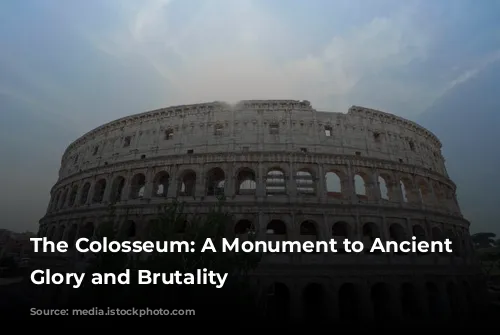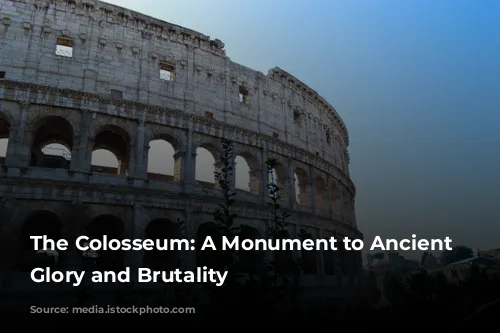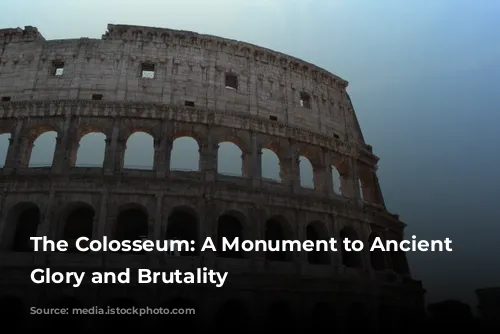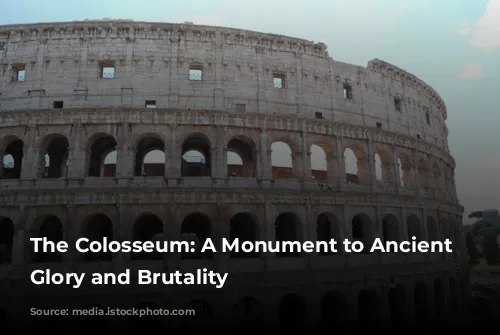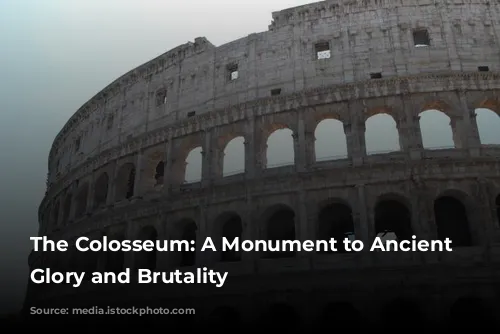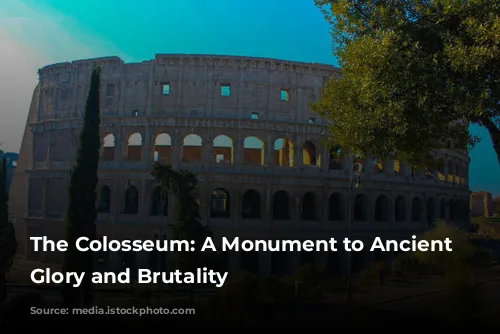The Colosseum, also known as the Flavian Amphitheatre, stands as a towering testament to the grandeur and power of the Roman Empire. This monument, the largest and most imposing amphitheatre in the Roman world, is one of the most recognizable landmarks in Rome, attracting visitors from all corners of the globe.
From Emperor Vespasian to the Colosseum
Emperor Vespasian, founder of the Flavian dynasty, initiated the construction of this monumental structure in 70 AD. His son, Titus, grandly unveiled the Colosseum to the public in 80 AD. The inauguration ceremony was an extravagant spectacle lasting 100 days, featuring gladiatorial combats, animal hunts, and even mock naval battles, known as naumachia. Historians estimate that over 5,000 animals were slain during these events.
The Colosseum: A Name With a History
But why is this amphitheatre called the Colosseum?
The name originates from a medieval prophecy by the Venerable Bede, who claimed that Rome would stand as long as the Colosseum. The name likely stemmed from the towering bronze statue of Emperor Nero, known as the “Colossus,” which once stood near the amphitheatre. Although the statue has long since been destroyed, the name “Colosseum” has endured, signifying the monument’s enduring presence.
Engineering Marvel: The Colosseum’s Construction
The Colosseum is a remarkable example of Roman engineering prowess. The elliptical shape of the amphitheatre was designed to accommodate a greater number of spectators. Its four levels, each adorned with eighty arches, are a testament to the Romans’ mastery of the arch, a structural element that allowed them to distribute the weight of massive structures effectively. The arches on the second and third levels were further embellished with imposing statues.
This imposing structure was built in less than ten years, a testament to the Romans’ organizational skills and efficient construction techniques. Imagine a series of Roman aqueducts stacked on top of each other – that’s essentially what the Colosseum resembles.
Time’s Erosion: The Colosseum Today
Today, we see only the skeleton of the Colosseum, its once pristine travertine stone exterior now weathered and worn. Three-fifths of the outer brick wall have disappeared over time, leaving behind a stark reminder of the monument’s age. During the Middle Ages, the Colosseum was repurposed as a quarry, its marble, lead, and iron plundered to build structures like the Barberini Palace, Piazza Venezia, and even St. Peter’s Basilica.
The holes visible in the Colosseum’s columns are a testament to the plundering of its materials. These holes were created to extract the lead and iron used to secure the marble blocks.
A City Within a City: Life Inside the Colosseum
The Colosseum could hold up to 70,000 spectators, providing a glimpse into the scale and popularity of these events. The tiered seating arrangement ensured that everyone had a clear view of the action, regardless of their social standing.
Entrance was free for all Roman citizens, but seating was strictly stratified. The upper tiers were reserved for the common people, with separate sections for men and women. As you descended towards the arena, the social status of the spectators increased, with senators, vestals, priests, and the emperor occupying the front row.
The Colosseum offered spectators a glimpse into the ingenuity of ancient Roman technology. An ingenious roof system, known as the “Velarium,” provided shade from the sun. This enormous linen tarpaulin, suspended by ropes, winches, and wooden poles, required the coordinated efforts of 100 sailors from the Imperial fleet to manipulate it.
The Colosseum and Its Deadly Spectacles
Entering the Colosseum today, we stand on the site of the arena, where once a mix of brick and wood provided the stage for spectacles that would shock modern audiences. The arena floor has vanished, replaced by cellars housing equipment used in the shows.
The Colosseum’s subterranean levels contained hoists and lifts, powered by counterweights, used to dramatically bring gladiators and animals into the arena through trapdoors. These effects were a source of excitement and surprise for the Roman crowds.
The Colosseum hosted a diverse range of events, each contributing to the public image of the emperor and providing a spectacle for the Roman people. The events were designed to foster a sense of unity between the emperor and the citizens, offering a diversion from political turmoil.
The Venationes: A Bloody Display of Power
The Colosseum hosted a variety of spectacles, from gladiatorial contests to animal hunts. Venationes, staged in the morning, pitted exotic animals against each other, or against human gladiators. These events often served as public executions, with condemned individuals thrown to the mercy of ferocious beasts.
Another type of spectacle, the Silvae, featured elaborate sets designed to resemble forests, complete with trees, bushes, and a variety of animals. These events were less violent than the venationes, offering a different type of spectacle.
The Gladiators: Heroes of the Arena
The gladiatorial contests were undoubtedly the most popular events held at the Colosseum. These contests, typically staged in the afternoon, featured duels between highly skilled warriors, often showcasing a range of fighting styles.
Gladiators were not always prisoners of war forced into battle. Many were volunteers seeking fame and wealth. These warriors received a substantial salary and enjoyed widespread popularity, particularly among women, who would pay exorbitant sums for their company.
There were twelve types of gladiators, each armed with a unique set of weapons. The Retiarius relied on a net, trident, and knife, while others fought with shields, sickles, or spears. The clash of different fighting styles added to the spectacle, enthralling the audience with their skill and daring.
Death and Redemption: The Audience’s Role
The fate of the defeated gladiator rested in the hands of the emperor. The audience’s cheers or demands could determine his fate. A thumbs up from the emperor meant mercy, while a thumbs down signaled death.
The victors were showered with golden palm leaves and lavish rewards. Charon-like servants ensured that the wounded were truly dead, sometimes finishing them off. The blood of fallen gladiators was believed to have healing properties, and was highly sought after for its supposed ability to cure epilepsy and enhance sexual vigor.
The Colosseum: A Legacy of Blood and Spectacle
The Colosseum stands as a testament to the Roman people’s fascination with violence and spectacle. The brutality of the events held within its walls may shock us today, but for the Romans, these events were a form of entertainment, a way to escape the realities of everyday life, and a display of the emperor’s power.
The Colosseum’s Evolution: From Arena to Symbol of Christianity
After the fall of the Roman Empire, the Colosseum fell into disuse, its walls eventually housing a variety of activities, including confraternities, hospitals, hermits, and even a cemetery.
Pope Sixtus V planned to demolish the Colosseum for urban development, but the structure was ultimately spared. Pope Benedict XIV declared it a sacred monument dedicated to the Passion of Christ, placing a cross on a pedestal to commemorate the sufferings of Christian martyrs.
The cross remains in place, serving as the starting point for the Stations of the Cross procession on Good Friday. The Colosseum’s transformation into a symbol of Christianity reflects the changing times and the enduring power of this iconic monument.
The Colosseum Today: A Timeless Symbol
For modern-day tourists, a visit to the Colosseum offers a glimpse into the grandeur and brutality of ancient Rome. It is a timeless symbol, a reminder of the empire’s power, and a testament to the enduring nature of human fascination with spectacle. As Charles Dickens aptly wrote, “seeing the Colosseum means seeing the ghost of old Rome floating over the places its people walk in.”
